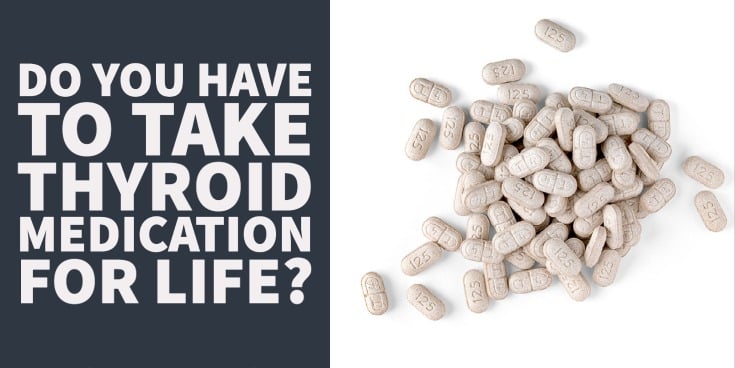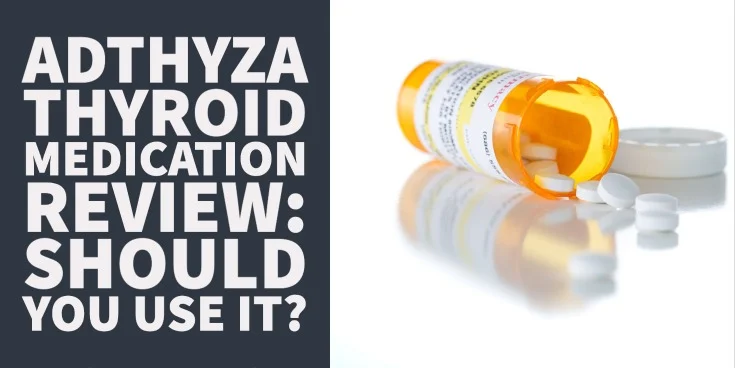The promise of fat burners is essentially a cheat code for rapid weight loss.
Who doesn’t love the idea of burning more calories while doing less? Or, how about maximizing your exercise routine even more?
If we assume that fat burners increase your weight loss efficiency by even 10%, that could end up cutting weeks of your weight loss program. Which means you get to your target goal much faster.
This promise is especially appealing to thyroid patients who often struggle with weight gain.
But the real question here is, do they work?
And the answer is yes, but only if you use the right ones at the right doses.
Because we are talking specifically about thyroid patients here, I’m going to be focusing on the most powerful.
But note that these will work for anyone trying to lose weight, not just people with thyroid conditions.
DOWNLOAD FREE RESOURCES
Foods to Avoid if you Have Thyroid Problems:
I’ve found that these 10 foods cause the most problems for thyroid patients. Learn which foods you should avoid if you have thyroid disease of any type.
The Complete List of Thyroid Lab tests:
The list includes optimal ranges, normal ranges, and the complete list of tests you need to diagnose and manage thyroid disease correctly!
#1. Alpha yohimbine
Sometimes referred to as Rauwolscine, alpha yohimbine is probably the king of fat burners.
It’s derived from the bark of trees native to Africa where it is often used there to enhance vitality.
But research has shown that it can accelerate weight loss by inhibiting alpha 2-adrenergic receptors (1).
These receptors just so happen to be found in high concentrations in stubborn fatty areas of the body like your lower abdomen, hips, and thighs.
In a somewhat confusing way, the inhibition of these alpha 2 adrenergic receptors stimulates the breakdown of fat in these areas.
A big part of the reason that people struggle to lose weight in these locations is because of these receptors.
But when you inhibit their function, you encourage the release of fatty acids from fat stores.
In effect, you are blocking the blocker.
Since thyroid patients often struggle with the thyroid body shape and corresponding thyroid belly, yohimbine is a great match for people with this condition.
But it’s not without its faults:
- First: Yes, yohimbine encourages the release of fatty acids from your fat cells, but you still must burn them up for energy after they are released. This means, for best results, you really need to combine exercise with yohimbine use. If you don’t, then those fatty acids will eventually be taken back up by your fat cells and you’ll end up right back where you started. This isn’t a downside, but you need to be aware of it.
- Second: Because yohimbine interacts with your sympathetic nervous system (alpha 2 adrenergic receptors are part of this system), it impacts neurotransmitters like norepinephrine. Norepinephrine, also known as nor-adrenaline, increases heart rate, blood pressure, and energy. This is great if you are trying to lose weight (this revs up metabolism and caloric burn), but not so great if you are already the type that tends to be overstimulated or if you struggle with insomnia or anxiety. Its stimulating effects are very mild, probably on par with caffeine, so it’s generally not an issue, but still something to consider.
The maximum dose of yohimbine you want to take is 3 mg per day.
But for thyroid patients, doses of around 1.5 mg per day are ideal given its potential for stimulation.
#2. Forskolin
Forskolin is the bioactive compound found in the plant Coleus Forskohlii which is the only plant known to contain this particular ingredient in high concentrations.
It’s notable because it activates the enzyme adenylate cyclase which increases cyclic adenosine monophosphate in cells.
You don’t really need to understand or care about this enzyme, but what you should care about is what happens in your cells with increased cAMP levels.
Some of those benefits include:
- Increased fat breakdown
- The production of cellular energy
- The preservation of muscle cells
- Enhanced blood blow
- And better regulation of hormones
What’s even more notable is that there are few things that activate cAMP and forskolin is among them (2).
The others include compounds like caffeine, certain hormones, and exercise.
Research has shown that you can get fat-burning effects of forskolin at doses of 50 mg per day but because most extracts contain only 20% Coleus Forskohlii, you’ll need around 250 mg of that ingredient to get those benefits.
#3. Green tea extract
Because green tea has been used for thousands of years, we have tons and tons of retrospective studies evaluating people who consume it.
What researchers can do is look back at people, say, over the last 20 years who are heavy drinkers or light drinkers of green tea, and then evaluate the differences between these two groups.
From this research, patterns become evident and assertions can be made.
Among the most relevant to this discussion is the fact that habitual green tea drinkers have 19.6% less body fat compared to non-habitual drinkers (3).
This suggests that there is something special about green tea in its ability to promote weight loss and a lean body.

Some people think that this benefit is primarily due to its caffeine content, but that can’t explain all of its benefits because decaffeinated extracts are still beneficial.
The current thought is that green tea upregulates the expression of genes in both muscles and the liver which promote fat breakdown and prevent fat storage.
As far as extracts go, look for one that has standardized amounts of polyphenols at 98% or greater, catechins at 80% or greater, EGCG at 50% or greater, and caffeine at less than 2%.
#4. Fucoxanthin
Another lesser-known fat loss-promoting compound is fucoxanthin.
It’s a vitamin A-like compound found in brown seaweed, in fact, it’s what gives brown seaweed its brown color.
Acting as a bioactive compound, research has shown that it has anti-obesity effects through its action on uncoupling protein-1 (UCP-1) (4).
The long story short is that fucoxanthin increases how much heat your fat tissues produce thereby stimulating thermogenesis.
This is the same process that is activated by thyroid hormones, by the way, and one reason that fucoxanthin is great for those with low thyroid function.
This thermogenic effect primarily occurs in brown fat, which regulates this process, so combining fucoxanthin with anything that can help increase brown fat (like T2) is a winning strategy for weight loss.
It’s unlikely to drive significant results when used by itself, but it definitely has a complementary place when used with other fat burners.
For physiologic effects, look for a dose of at least 4 mg.
You can take fucoxanthin by itself or you can get it in a brown seaweed supplement.
Speaking of brown fat activation, next on the list is a spice known as grains of paradise:
#5. Grains of paradise
This plant, which is related to ginger, is traditionally used as a spice, but sometimes also as a medicine (similar to the way we use ginger).
Its claim to fame, and the reason it makes this list, is because of its brown fat-activating bioactive compounds known as 6-paradol and 6-gingerol.
One study evaluated women who took Paradoxine (a standardized extract of grains of paradise) and found that they lost both body fat and abdmoinal fat when compared to placebo.
The proposed mechanism for this effortless fat loss was through an increase in whole-body energy expenditure likely through the activation of brown fat (5).
As you might imagine, the combination of grains of paradise and fucoxanthin can be particularly powerful given their synergistic mechanisms of action.
For dosing, I’d recommend sticking to the standardized extract known as Paradoxine which contains 15% aframols and 12.5% 6-paradol.
#6. 3,5 diiodo-l-thyronine
Don’t let the name confuse you, 3,5 diiodo-l-thyronine is just the official way to describe the thyroid hormone T2.
And as a thyroid hormone, T2 is the perfect fat burner.
T2 isn’t as well known as T4 and T3, which are the more prominent thyroid hormones found in prescription thyroid medications, but it’s still potent nonetheless.
Research is currently underway to fully evaluate how T2 functions in the body, but here’s what we know so far:
- It’s at least partially responsible (perhaps even more than T3) for regulating basal metabolic rate
- It activates brown fat tissue (6) and browns white fat
- It increases cellular ATP production
- It helps regulate blood sugar
- And supports skeletal muscle
It does pretty much everything you’d want a fat burner to do so the real question is less about whether or not it works and more about whether or not it’s safe.
Unlike the other compounds listed here, T2 is an active body-identical thyroid hormone which means it can be quite powerful.
But based on available evidence, human studies show that T2 can be safely used in doses up to 300 mcg per day without negatively impacting other hormones or the HPT axis (7).
Given its ability to rev up metabolism, and given the fact that thyroid patients already have problems with creating thyroid hormone, it’s perfect for this group of people.
As far as dosing is concerned, 30 to 100 mcg will usually do the trick for weight loss but patients with hypothyroidism may need more.
Some people are sensitive to T2, though (like any other thyroid hormone), so you may find you need more or less, depending on your genetics.
But I would not recommend exceeding the 300 mcg per day range as that may lead to unwanted side effects.
#7. Hesperidin and Naringin
Hesperidin and naringin are both powerful citrus-based bioflavonoids that can be extracted from plants and added to supplements in high doses.
This allows you to take advantage of the power of these incredibly healthy compounds that are naturally found in lemons, oranges, and grapefruits.
These bioactive compounds are at least partially responsible for the weight-loss-promoting effects of fruits (8).
Contrary to popular belief, fruits have an anti-obesity effect and do not promote weight gain.
Study after study has proven that the more fruit you eat, the more likely you are to be lean (9).
But, let’s put that aside for a minute.
Even if you aren’t on board with the idea that fruits help you lose weight (they absolutely do), this isn’t a problem for naringin or hesperidin extracts because they don’t contain fruit sugar or calories.
By extracting out these bioflavonoids, you can get all of their benefits, without any of their baggage (in the form of calories).
Research has shown that both can help with weight loss by upregulating the genes involved in the breakdown of fat.
You simply won’t find cleaner or more natural fat-burning compounds.
For dosing, look for a naringin extract of 98% or greater and a hesperidin extract that has 90% bioflavonoids.
The dose for both is 300 mg per day.
If you’re like me and you like the idea of efficiency, then you can get most of these fat-burning ingredients in this supplement (including a few extra not discussed).
On that topic, if you like the idea of using supplements to make weight loss easier then I’d recommend reading more about berberine next.
It’s not a fat burner per se, but it’s still just as powerful.
Scientific References
#1. https://www.ncbi.nlm.nih.gov/pmc/articles/PMC9590431/
#2. https://www.ncbi.nlm.nih.gov/pmc/articles/PMC2129145/
#3. https://www.ncbi.nlm.nih.gov/pmc/articles/PMC4055352/
#4. https://www.ncbi.nlm.nih.gov/pmc/articles/PMC4413207/
#5. https://pubmed.ncbi.nlm.nih.gov/24759256/
#6. https://www.ncbi.nlm.nih.gov/pmc/articles/PMC6468521/
#7. https://pubmed.ncbi.nlm.nih.gov/22217997/
#8. https://www.ncbi.nlm.nih.gov/pmc/articles/PMC6859214/
#9. https://www.ncbi.nlm.nih.gov/pmc/articles/PMC5084020/









